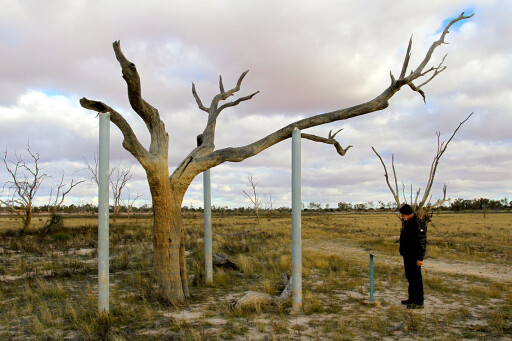
IT’S HARD to imagine an oversized wetland area tucked away in the northwest corner of NSW, yet it holds significant value for many birds and endangered animals.
Several threatened species have been recorded within the area, including varieties of snakes, ducks and bats.
Lake Pinaroo and the surrounding wetlands covers an estimated 2000 acres which, when in drought, can take up to six years to dry out due to not having an overflow. Listed as a Ramsar site in 1996, it is one of 12 located in NSW. These significant wetland sites are listed worldwide to protect the biodiversity of the wetlands, water birds and animals found within.

Lake Pinaroo is very important to the arid northwest area as it holds water longer than any other wetland within the region, allowing birdlife to survive for longer periods. It also allows migrating birds to ‘stop over’ on their way past. An estimated 61 species of birds have been recorded, as well as bats, rare snakes and endangered plants.
On the hunt for an inland sea, explorer Charles Sturt set up base camp and a stockade beside the lake in 1844 during his exploration of the Simpson Desert. These remnants can still be found, as well as those of the old Fort Grey homestead and windmill. The original homestead was closer to the water’s edge, but in 1974 when the lake was in flood, strong winds produced high waves and destroyed the homestead. It was moved to where it lies today, but was again destroyed by waves.

During Sturt’s time here the lake was dry, and on his journey he carved several letters – his name and the date of 1845 – into a Coolabah tree. The letters S and an arrow were an indication of Sturt’s travel. It’s only when the lake is in drought that this tree can be accessed by a 3km walk across the lake bed. The tree died during the 1956 flood, and in 1990 NPWS put up steel posts (to support several tree limbs and stop them from falling) in an attempt to save this significant part of Australia’s history. It’s only when you stand under this tree and see the watermark way above your head that you realise just how much water this lake can hold.
If you do decide to explore the Lake Pinaroo walking trail when the lake is dry there are sign-posted areas highlighting Aboriginal cooking hearths, and at the centre of the lake there are remains of The Well. This bore was sunk for the Fort Grey homestead when the area was in severe drought. All that remains now are rusty shells of boilers, tanks and plates. It was once a wood-fired boiler that was able to pump water to the surface using a walking beam.

COMMENTS